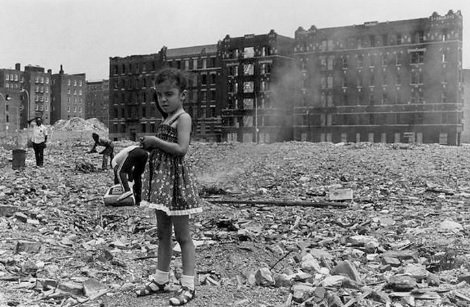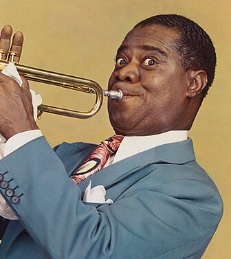Afro-Cuban culture, Blog, Cuba, Cuban Jazz, Latin Jazz, The Cuba-US connection, Video and audio
It’s billed as “the largest celebration of Cuban culture in the U.S. since the 1950’s” – and it may well be true.
This year’s New Orleans Jazz Fest will include over 150 Cuban musicians, artists and craftsman, a large number of whom will be visiting the United States for the very first time.
Events will be at the Cultural Exchange Pavilion.
Performances on the Cuban Stage every day from 11:30 AM to 5:30 PM
Friday, April 28
The Pedrito Martinez Group
Septeto Nacional Ignacio Piñeiro of Cuba
Grupo Caury of Cuba
Saturday, April 29
Septeto Nacional Ignacio Piñeiro of Cuba
Grupo Caury of Cuba
Telmary y Habana Sana of Cuba
The Pedrito Martinez Group
Conga Los Hoyos of Cuba
Abdullah Ibrahim (Not Cuban but don’t miss him!)
Sunday, April 30
Septeto Nacional Ignacio Piñeiro of Cuba
Telmary y Habana Sana of Cuba
Conga Los Hoyos of Cuba
Grupo Caury of Cuba
Lakou Mizik (Haiti)
Gente de Zona
Thursday, May 4
The Pedrito Martinez Rumba Project featuring Roman Diaz
Changüí Guantánamo of Cuba
Conga Los Hoyos of Cuba
Friday, May 5
The Pedrito Martinez Rumba Project featuring Roman Diaz
Adonis y Osain del Monte of Cuba
Changüí Guantánamo of Cuba
Saturday, May 6
Los Van Van
The Pedrito Martinez Rumba Project featuring Roman Diaz
Adonis y Osain del Monte of Cuba
Changüí Guantánamo of Cuba
Septeto Santiaguero of Cuba
Conga Los Hoyos of Cuba
Sunday, May 7
Chucho Valdes Quintet,
Adonis y Osain del Monte of Cuba
Daymé Arocena of Cuba
Septeto Santiaguero of Cuba
Changüí Guantánamo of Cuba
– Ken McCarthy
Jazz on the Tube
P.S. Our unique programming is made possible by help from people like you. Learn how you can contribute to our efforts here: Support Jazz on the Tube
Thanks.
Blog, Cuba, The Cuba-US connection, Video and audio
Filmed at Live at Wolf Trap in Virginia on August 8, 1993.
Everyone knows at least one Cuban song: “Guantanamera”
Why?
Because it’s beautiful – and because Pete Seeger worked so hard to put it on the global music map.
Seeger learned the song in 1962 from a Cuban musician named Hector Angulo from Santa Clara, Cuba who was working at a children’s summer camp in the Catkills.
He recorded it live at Carnegie Hall in 1963, the year after the Cuban Missile Crisis, and it appeared on his album “We Shall Overcome.”
Over the five plus decades that he performed it – it was one of ihs favorite songs – he encouraged his audiences to sing along and learn a little Spanish in the process.
A “Guantanamera” means a girl from the musical eastern Cuban city of Guantanamo. A “guajira” is a farmer-peasant girl. (A guajira is also a type of Cuban song.)
The song started life as “Guajira Guantanamera” and was written in 1932 by Joseíto Fernandez (1908 – 1979.)
In 1959, Julián Orbón, professor at the Manhattan School of Music where Angulo was a student, adapted stanzas from Cuban poet and revolutionary hero Jose Marti’s (1853-1895) poem “Versos Sencillos” (Simple Verses)
Others who recorded it include Joan Baez, Jose Feliciano, Los Lobos, Celia Cruz, The Sandpipers, Julio Iglesias, Gloria Estefan, and even Pitbull.
What about the rest of the words?
In honor of the great spirit Peter Seeger (1919 – 2014) who brought the song to worldwide attention, here we go.
Note: There are many variations. Here’s one:
Yo soy un hombre sincero
(I am a truthful man)
De donde crecen las palmas
(From this land of palm trees.)
Y antes de morirme quiero
(And before dying I want…)
Echar mis versos del alma
(to share these verses from my soul)
Mi verso es de un verde claro
(My verse is light green)
Y de un carmín encendido
(But it’s also flaming red)
Mi verso es un ciervo herido
(My verse is a wounded deer)
Que busca en el monte amparo
(Who seeks refuge in the mountain)
Cultivo una rosa blanca
(I cultivate a white rose)
En julio como en enero
(In June just just as in January)
Para el amigo sincero
(For the sincere friend)
Que me da su mano franca
(who gives me his hand)
Y para el cruel
(And for the cruel one…)
que me arranca el corazon con que vivo
(Who would tear out this heart with which I live)
Cardo ni ortiga cultivo
(I cultivate neither thistles nor nettles)
cultivo la rosa blanca
(I cultivate a white rose)
Con los pobres de la tierra
(With the poor people of the earth)
Quiero yo mi suerte echar
(I want to cast my lot)
El arroyo de la sierra
(The mountain stream)
Me complace más que el mar
(Gives me more pleasure than the sea)
Here’s the song performed by its composer, Joseíto Fernandez, his version, his original words.
Note the Cuban piano wizard who kicks in at 5:19.
If anyone knows who this might be, please drop me a line.
Update: Two independent sources say it’s Cheo Belén Puig.
– Ken McCarthy
Jazz on the Tube
P.S. Our unique programming is made possible by help from people like you. Learn how you can contribute to our efforts here: Support Jazz on the Tube
Thanks.
Afro-Cuban culture, Blog, Cuba, Cuban Jazz, Latin Jazz, Video and audio

One way to learn more about Cuban and Afro-Latin music is to take advantage of some of the excellent radio shows on the subject.
Here’s a short list of ones that you can stream via the Internet from anywhere on earth.
If you know of any other good programs that are streamable, please write us and we’ll add them to the list.
WWPV.org (Cuban)
Sundays Noon to 3 PM
‘Cuban Bridge” with Toni Basanta
An erudite and enjoyable three hours from one of the world’s most enthusiastic and informed experts on Cuba’s music past, present, and to come
WBAI.org (Pan Latin)
Tuesdays 10 AM to 12 PM
New York International with Al Angeloro
Saturdays 3 PM to 6 PM
New World Gallery with “Chico” Alvarez
Sundays 3 PM to 6 PM
Con Sabor Latino with Nando Albericci + Marysol Cerdeira
Note: Many of these programs are also archived
WKCR.org (Pan Latin)
Mondays 10 PM to 12 AM
Caribe Latino
Tuesdays 12 AM to 1 AM
Latin Jazz Hour
Wednesdays 10 PM to 11 PM
Nueva Cancion y Demas
Wednesdays 11 PM to 1 AM
Som do Brasil
KRTU (Pan Latin)
Every Sunday from 11:00 am to 2:00 pm (Central Time)
The Latin Jazz Brunch with Henry Brun Airs from: San Antonio, Texas and also streams live online and is archived. The program has been on the air for 15 years.
Salsa Warriors (Pan Latin)
Last but not least, there’s this 24/7 option. We especially recommend Que Viva La Music with Vicki Sola, Marysol Cerdeira and Andres Padua.
Afro-Latin music venues
For Afro-Latin music venues in New York City (the northern most outpost of the Caribbean), click here: Afro-Latin music venues in New York City
– Ken McCarthy
Jazz on the Tube
P.S. Our unique programming is made possible by help from people like you. Learn how you can contribute to our efforts here: Support Jazz on the Tube
Thanks.
Afro-Cuban culture, Blog, Cuba, Cuban Jazz, Latin Jazz, Video and audio
One of the highlights of my March 2016 trip to Cuba was visiting the small city of Güines, a major historical center of Cuba’s sugar industry, 50 kilometers southeast of Havana.
The city center has a beautiful town square and many handsome private homes and is the birthplace of not one but two Cuban music legends: Tata Güines and Arsenio Rodríguez.
By an accident of fate, the two were raised so closely together, if you have a good arm you could throw a rock from Tata Guines’s childhood home, (a one room former slave cell) to Arsenio’s childhood home, (a small house on the street just beyond the barracks compound.)
Along with Chano Pozo and Patato Valdés, Güines, who was born in 1930, is considered one Cuba’s greatest masters of the tumbadora, the conga drum.
Fortunately, there’s a lot of excellent video of his work.
First, Güines with a group of friends (“Los Amigos”): pianist (Frank Emilio), flautist, (Miguel O’Farril), bassist (Chachuito) and timablero (Guillermo Barreto).
Güines tells a bit of his life story which is followed by a solo
Güines with the legendary rumba group Yoruba Abdado and Changuito (filmed in 2002)
And now, for a lesson from the master.
Spanish and/or French will come in handy here. If not an attentive pair of eyes and ears will help.
Want more instruction?
Good!
Whether you play or are simply someone who loves and is fascinated by the music, this tutorial with Changuito (José Luis Quintana) and Giovanni Hidalgo will change your ears – for the better – forever.
Click here: Inside the Conga
– Ken McCarthy
Jazz on the Tube
P.S. Our unique programming is made possible by help from people like you. Learn how you can contribute to our efforts here: Support Jazz on the Tube
Thanks.
Afro-Cuban culture, Blog, Puerto Rico, The Cuba-US connection, Video and audio
Filmed October 9, 2016 at La Casita de ChemaIf you can’t make it to Cuba, but you can make it to the Bronx…
At Jazz on the Tube we focus on Cuba, but the Caribbean is full of musical treasure islands: Trinidad, Jamaica, Haiti, the Dominican Republic, and that’s just scratching the surface.
One place is particularly important to the development American music: Puerto Rico.
Puerto Rico? Yes, Puerto Rico
The contribution of Puerto Rican musicians to the development of American music is very deep and rich, but here are a few highlights:
1. When the pioneering black American bandleader James Reese Europe needed musicians for his band to take to Europe to perform for the troops and civilians during World War I he went to Puerto Rico to recruit his reed players.
It was the first exposure Europeans had to Afro-American band music and as Noble Sissle said, it was this band that first brought the “Jazz germ” to France way back in 1918.
James Reese Europe: “We won France by playing music which was ours and not a pale imitation of others, and if we are to develop in America we must develop along our own lines.” The reed section that helped pull off this creative feat came from Puerto Rico.
2. Puerto Rican born and educated Juan Tizol is best known as a virtuosic trombonist and the composer of jazz standards like “Caravan” and “Perdido,” but beyond that he was Duke Ellington’s “secret weapon” during the particularly fertile period of Ellington’s career from 1929 through 1944.
Tizol was not only the “rock” of the trombone section (his technique was flawless and his tone blended beautifully with the reed section), he also worked closely with Ellington on arrangements and was the one who actually produced the band’s charts.
3. Tito Puente, El Ray (“The King”), what more can we say?
A Nuyorican, a Puerto Rican born in New York City, Puente was not only one of the three “Mambo Kings” of the legendary Cuban-dominated Palladium Ballroom, he was also the most important figure in the development and evolution of Latin Jazz in North America and around the world as a performer, composer, bandleader, and educator.
Puente was the great ambassador of Latin music. His life mission was summed up beautifully in the words of one his compositions which became a hit for Carlos Santana:
“Oye como va mi ritmo”…”Listen to how my rhythm goes.”
Bomba and Plena
Bomba and Plena are Puerto Rican “roots” musics.
To my heart, mind and ear there are as significant to the world’s music culture as Cuba’s rumba.
Like the Cuban rumba, they are a living examples of “music in, by, and for community. ”
Very short history:
Bomba is the older form. It dates back to the first Africans in Puerto Rico in the 17th century. It’s both a political music and a social music for celebration and community. It received influences from around the Caribbean including Cuba, Haiti and the Dominican Republic.
Follkways Records says Bomba utilizes sixteen different rhythms. The instruments are the “subidor” or “primo” (a big barrel shaped drum), maracas, and the “cua” or “fua”, two sticks played against the wood of the barrel drum or a piece of wood. Dance improvised in partnership with the drummers is an essential part of the art.
Plena developed from bomba in the beginning of the 20th century in southern Puerto Rico. It has one primary rhythm and is characterized by the use of the “pandereta,” a round drum that comes in a variety of sizes. The improvising soloist drum, the smallest and highest pitched, is the “requinto.”
Plena lyrics talk about the news, political protest, and are often satirical.
The Bomba and Plena you’re listening to here went through TWO crucibles:
First, the experience of Africans kidnapped, terrorized and brought to Puerto Rico to work in the sugar fields and mills of the Caribbean.
Second, the experience of Puerto Ricans moving from their tropical, largely agricultural, Spanish-speaking island to New York City, a cold, Anglo, urban environment where they were discriminated against and lived in areas of the city that failed to receive basic services other neighborhoods took for granted.
The South Bronx of the 70s and 80s, a community which was and is home to tens of thousands of Puerto Ricans, became a global symbol of government neglect and social despair.
 It was in this environment that Jose Soto (“Chema”), his family and community built the first “casita” in New York City on a rubble strewn vacant lot on Brook Avenue and 158th Street across the street from his apartment in the South Bronx.
It was in this environment that Jose Soto (“Chema”), his family and community built the first “casita” in New York City on a rubble strewn vacant lot on Brook Avenue and 158th Street across the street from his apartment in the South Bronx.
The casita (small, informal house) and surrounding garden was called the Rincon Criollo and is also popularly known as the La Casita de Chema. (The original casita was moved a block away a few years ago.)
Casitas are now found throughout the South Bronx and there’s even one in East Harlem.
They are centers of community life for all generations and, especially in the case of La Casita de Chema, important centers for education and performance.
The video above was filmed the final day of Bomplenazo 2016, a biannual, multi-day event hosted by Hostos Community College in the Bronx.
The place: La Casita de Chema
The date: October 9, 2016
The event was scheduled to go from noon to 5 PM.
I arrived at around 1 PM and when I left at 6 PM the place was still rocking.
If you’re in New York City or planning to visit, finding events like this is not easy.
My best advice: Use the Jazz on the Tube Afro-Latin music venues in New York City list and visit each link. This will improve your odds of catching something spectacular, and all-but-unadvertised.
Five books that will help you dig deeper into the astonishing creative fertility of Puerto Rico and the Puerto Rican people:
Puerto Rican Pioneers in Jazz: Bomba Beats to Latin Jazz
Basilio Serrano
Tito Puente and the Making of Latin Music
by Steven Loza
The Book of Salsa: A Chronicle of Urban Music from the Caribbean to New York City
Cesar Miguel Rondon
The Latin Tinge: The Impact of Latin American Music on the United States
John Storm Roberts
Latin Jazz: The First of the Fusions
John Storm Roberts
More from La Casita de Chema
The original Rincon Criollo (aka “La Casita de Chema”) June 1991
– Ken McCarthy
Jazz on the Tube
Afro-Cuban culture, Blog, Cuba, Cuban Jazz, Jazz on the Tube Interview, Latin Jazz, The Cuba-US connection, Video and audio
Interview
Download the mp3 here
Ken talks with jazz veterans Jane Bunnett and Larry Cramer about their musical odyssey in Cuba which began over 30 years ago in 1982.
You will not find North Americans anywhere who have a deeper connection with the island, its music and its musicians.
If you’re at all interested in Cuba and its music, lock the door, turn off the ringer on your phone and dig in. Don’t miss this.
Two excerpts from the documentary “Cuban Odyssey: Spirits Of Havana” about Jane and Larry’s musical adventures in Cuba.
Jane and Maqueque, an extraordinary band of young Cuban musicians recording and on tour in North America.
You can learn more about Maqueque here.
– Ken McCarthy
Jazz on the Tube
P.S. Our unique programming is made possible by help from people like you. Learn how you can contribute to our efforts here: Support Jazz on the Tube
Thanks.




 Louis Armstrong
Louis Armstrong